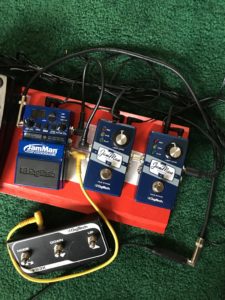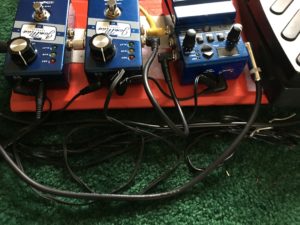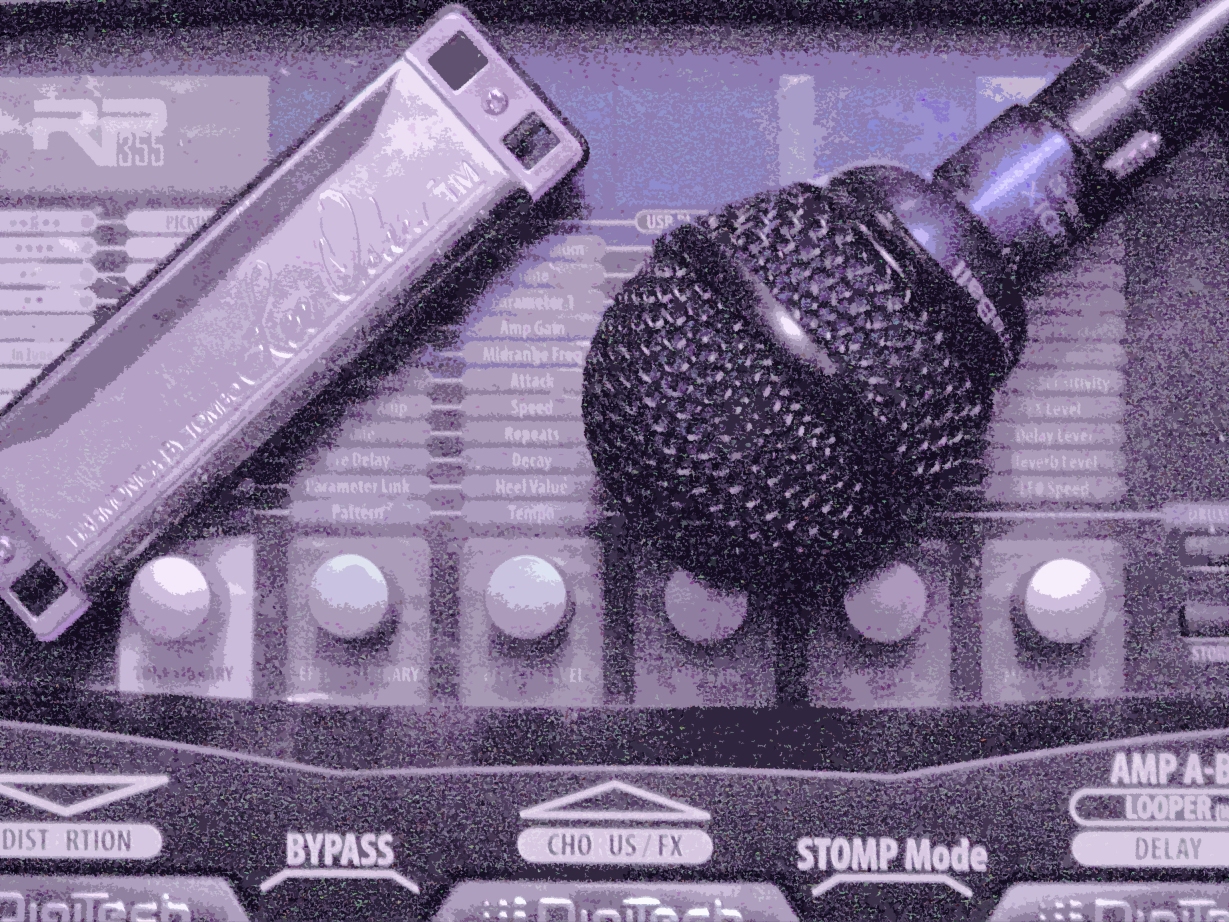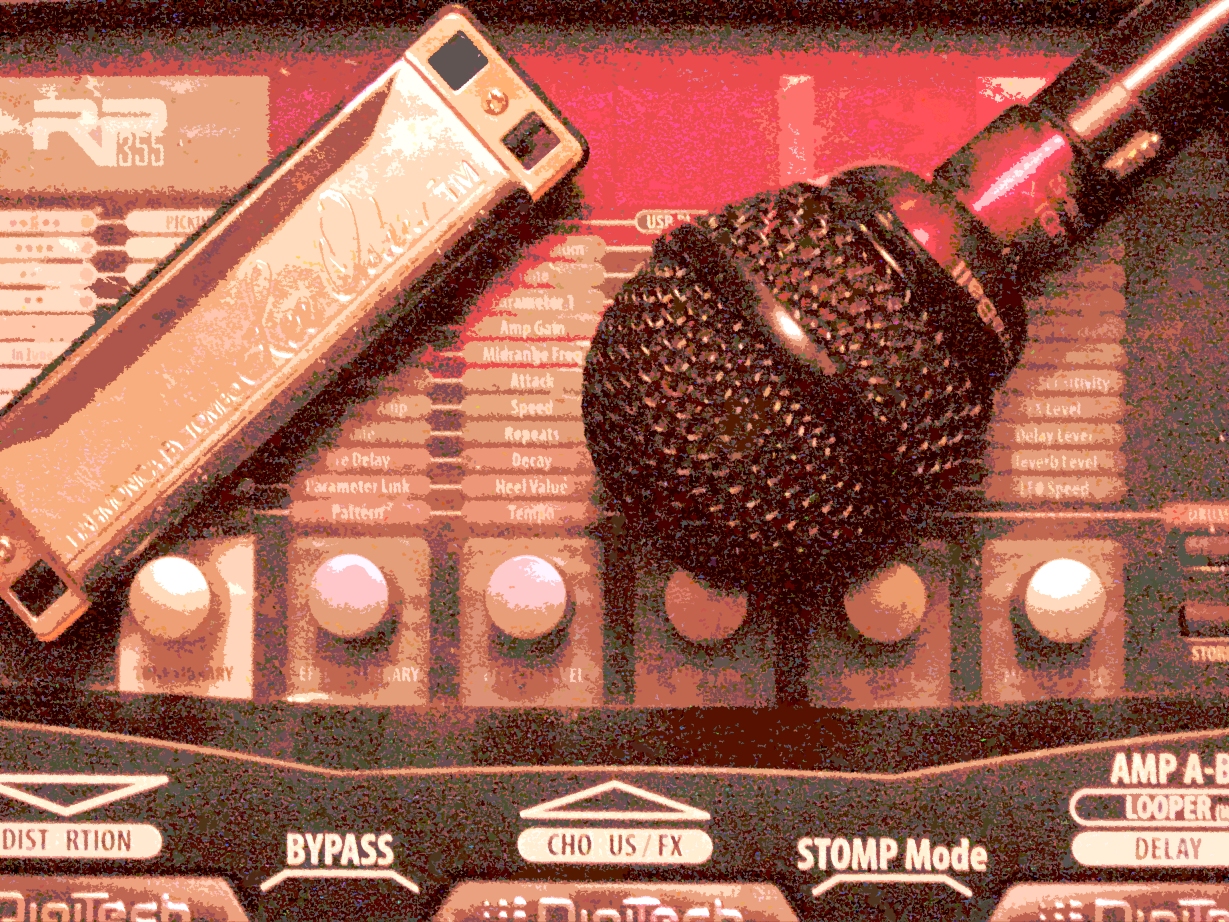
Multitrack looping on the cheap: JamSyncing with Digitech’s XT loopers
I’ve been working with the Pigtronix Infinity looper for a while, and finally came to the conclusion that it’s not ideal for me. So I pulled my Digitech JamMan Solo XT looper out of the closet to take another look at it, and I’m liking what it does now.
The JamMan Solo XT is a solid looper that can use a little more convenience

The JamMan Solo XT has a lot going for it, and a few inconveniences. The inconveniences mainly relate to the form factor–one heavily spring-loaded footpad basically does everything: start a loop, set the endpoint, kick in overdub, stop the overdub, end playback. Hitting that heavily loaded pedal twice quickly to stop loop playback is no easy thing, especially if you’re looking for a precise ending. To choose a different loop, you have to push one of two pretty small buttons on the front panel, which means leaning down to do so if you’ve got the device on the floor.
The ideal looper form factor in my opinion is the one you see in the Digitech JamMan Stereo, which has a much larger footprint wwith four footwitches for all the major functions plus lots of I/O and mixing power in the box. But alas, the JamMan Stereo does not come with JamSync, about which more in a moment. To a large extent the form factor issues in the JamMan Solo XT are overcome with the addition of an FS3 footswitch, which adds one-button end playback, loop up and loop down functions to the Solo XT for an additional $35.
On the plus side, the Solo XT has a lot of builtin memory (35 linear minutes of 24-bit stereo recording) and the ability to add another 32 gig of loop memory (equivalent to about 35 hours of linear 24 bit stereo recording time) via an inexpensive Micro SDHC card. That’s very useful if, like me, you use the looper for a scratch pad and idea generator, as well as for storing accompaniments for full length pieces when necessary for practice or performance. Between the internal and card memories the Solo XT gives you 400 discreet slots for storing loops. Digitech also supplies software for backing up and loading loops to and from the Solo XT. Overall, it’s a pretty nice set of features, especially at a retail price of $129 (or $165 with the FS3 footswitch, or $185 with the footswitch plus a 32 GB Micro SDHC card).
The big looping issue in the Solo XT is a design feature, not a flaw per se: there’s only one track, which can have as many layers as you want, but every layer will have the same length and the same start/stop points, and you can only remove or add one layer at a time. This is precisely the issue that JamSync was designed to resolve, and it does it by synchronizing additional inexpensive one-track loopers (the JamMan Express XT) with the Solo XT. In effect, you can build a nicely functional multi-track looper one track at a time by adding Express XTs to the looper chain via JamSync. Each device in the chain connects to the previous device, as per the photo. The Express XT doesn’t have internal storage for loops, so the current loop in an Express XT is the only loop in it, and that loop goes away when the device is powered down, but so what? If you want more loops in the box, get a Solo XT. (A Solo XT only costs $30 more new or used than an Express XT, but the functionality of the Solo XT is something you really only need at the front of the loop chain. You’ll need an external recording device to capture all the loop action on multiple JamSynced loopers, especially if the loopers farther down the chain are running loops whose length is multiples of the original loop.)
Building the multitrack looper, one Express XT at a time
I damaged my JamMan Express XT bringing it home from Idaho last summer. (To be specific, I left the 1/8″ sync cable plugged into it, and when the cable was jarred it knocked the 1/8″ socket off the motherboard.) Before it was damaged, I’d spent a little time confirming that the JamSync function, which enables two or more XT loopers to be synchronized via 1/8″ stereo cables, works as advertised. The loops in a synchronized Express XT will start and stop with the master looper (in my case, the Solo XT); JamSync also supports loops of different lengths, so the length of loops in the Express XTs can be multiples of the length of the loop in the master device.


So I sold my Pigtronix Infinity, and bought a couple of used JamMan Express XTs. You can see what the setup looks like from the photos. In effect, it’s a 3-track synced looper with independent phrase lengths and audio outputs. Each device has a big volume knob, so mixing on the fly is pretty easy. In the top view, sync control flows left to right, audio flows from right to left. Recording order for the devices is left to right in order to keep previously recorded loops out of new layers. I feed it via a mono signal from a Behringer UB802 mixer that combines signals from my Fender Mustang 3, Joyo American Sound, DigiTech RP500, and Zoom G3 into a single output. The sound in the loopers is accurate and strong, with different layers speaking clearly. (Like I said, both devices record 24-bit audio.)
Total cost for the pedals was about $220 with all three bought used from Guitar Center (plus another $35 for the FS3, which really reduces unnecessary aggravation if your main looper is a JamMan Solo XT); buying the pedals new would add about $100 to the price tag. Either way, I don’t think there’s another 3-track looping setup out there with this much flexibility near that price. (The Roland RC-300 goes for $600; granted that it includes more functions and features too.) Further, if you get a 3-track looper you can’t expand it, but you can add more tracks to the Digitech setup via synced JamMan Expresses anytime.
I should mention that I really like the simplicity of the Express XT. A big loop volume knob, red/yellow/green status lights, and a nice metal footswitch that’s a LOT easier to handle than the spring-loaded pedal in the Solo XT–doesn’t take long to master that. An Express XT can of course function as a master device in a chain of XT loopers as well as a downstream linked device, so it’s not hard to recommend an Express XT either as an add-one to a Solo XT or by itself–either way, it’ll be useful and expandable over time. I do think any looper that functions as someone’s main or only looper ought to be able to save the loops created on it and transmit those loops somehow to other devices, like a computer, so if you’re thinking about your first looper I’d consider the Solo XT first.
Digitech’s gear tends to include the right functions in a durable package at a price well under the rest of the field. The value for money with these loopers is pretty high, and the option to add tracks anytime with inexpensive devices is unmatched in the market. I like these loopers, and I intend to work up some new compositions for live performance with them.
Tags In
Related Posts
5 Comments
Leave a Reply
You must be logged in to post a comment.
WHAT’S NEW
Categories
- Audio/Video
- Blog
- Blue Future
- Digitech RP Tricks and Tips
- Discography, CDs, Projects, Info, Notes
- Featured Video
- For the Beginner
- Gallery
- Hunter's Effects
- Hunter's Music
- Huntersounds for Fender Mustang
- Meet the Pros
- More Video
- MPH: Maw/Preston/Hunter
- My Three Big Contributions
- Player's Resources
- Pro Tips & Techniques
- Recommended Artists & Recordings
- Recommended Gear
- Recorded Performances
- Reviews, Interviews, Testimonials
- The Lucky One
- Uncategorized
- Upcoming Performances
- Zoom G3 Tips and Tricks



Hi, it is a great set-up!
Do you use FX3 as a stop-all button? Can you also only stop the master?
Thanks
Hi Sur, the FX3 is connected to the master looper, the Solo XT; there’s no input for the FX3 on the Jamman Solo. Stopping the master stops all the loopers, but they have to be restarted individually–best order is to restart the synced loopers, then the master, which will sync all from the start. It is a great setup, isn’t it? Lots of functionality for about $100 per synced track.
Hi Richard, thanks for your answer. How can you stop only the master? e.g. all your 3 loops are playing and you want only stop the master loop, how do you do that? Looking forward to your answer
If the 3 units are synced, then by definition you can’t stop the master without stopping the others. A workaround is to use the volume control on the master; if you turn that down to zero, the master will still be looping, the synced units will still be looping, and the master looper will be inaudible. If you’re running all three loopers through separate channels on a mixer (which is not what I do, but still), then you could bring the master looper volume to zero on its mixer channel. Keep in mind that the audio outputs from each looper can be routed to separate mixer channels, i.e. you don’t need the audio to pass through all of them in order to sync them.
I have a couple of these, along with the SDRUM, which is great. the only glitch it has is it will repeat the first measure sometimes, and you never know when it’s going to happen. I sold the 3 pedals I had then bought 2 again, lol. it’s a great function, and with the SDRUM as the metronome and drum machine it is really cool what you can do with that pedal too. but that glitch, people contacted them and they basically said “we know about it but it isn’t a priority” which sucks, but for a 2 amp looping situation, an aby pedal, I have a looper and aby for my guitar and one of each for my keyboard, it is great to come up with ideas quick, then record it into my livetrak 20 and finish it on my tascam dp 24